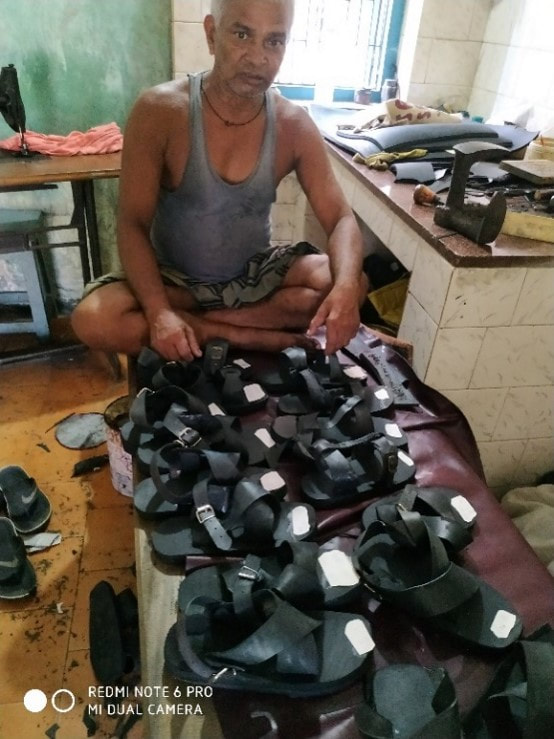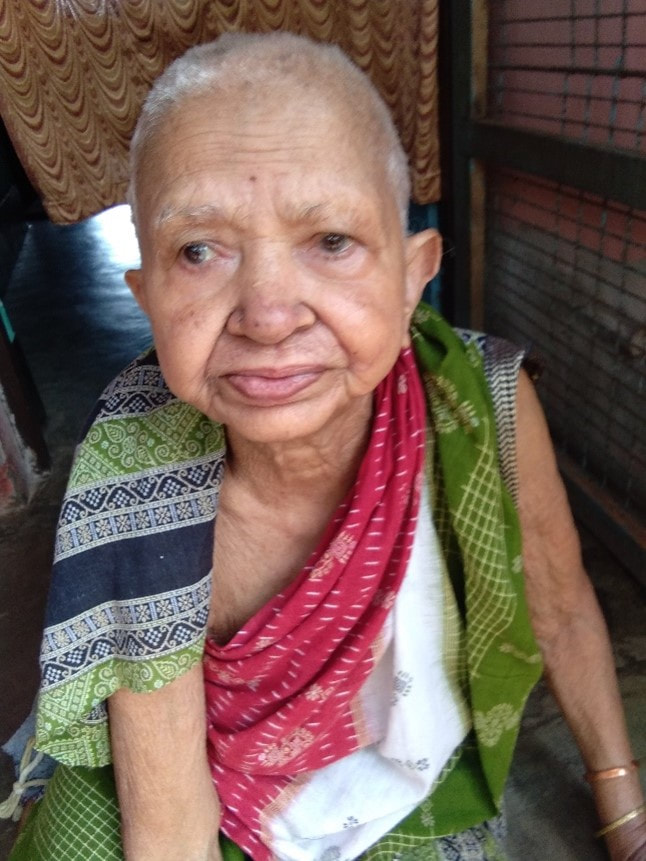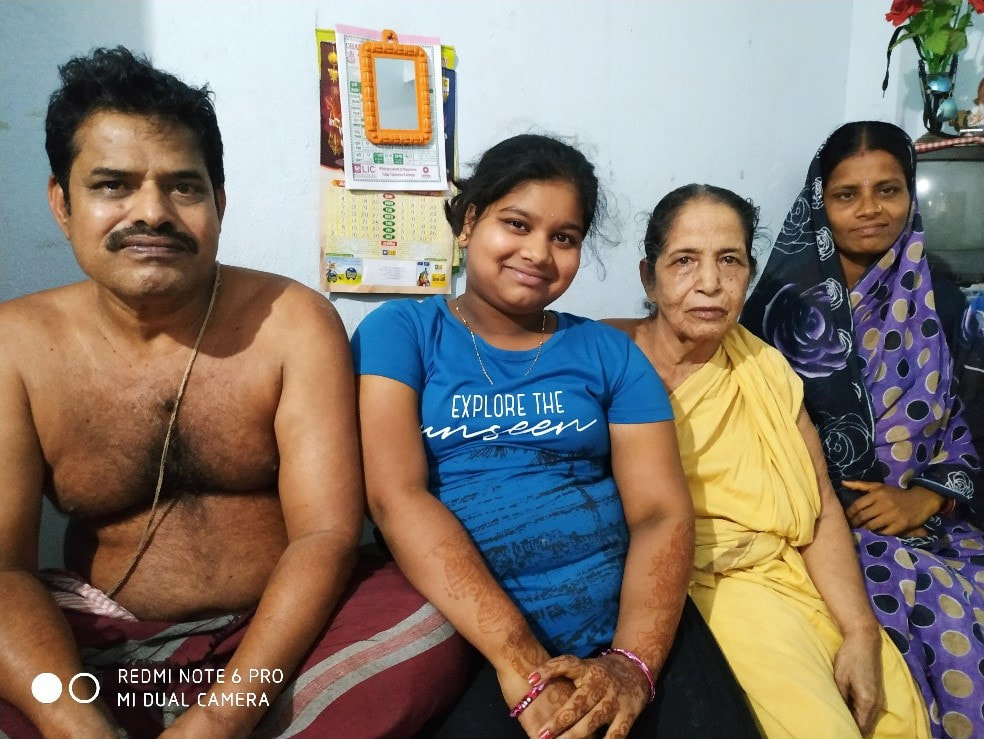Providing hope to leprosy patients when no one else will
Karunalaya Leprosy Care Centre was founded in 1975 by Father Marian Zelazek. He wanted to eradicate leprosy as well as provide care, treatment and rehabilitation to those with the disease.
He initially dressed the wounds and ulcers of leprosy sufferers, but then began to bring people affected and abandoned back to the settlement. Eventually he provided houses for residents at the centre.
Father Marian passed away in 2016, aged 88, but his legacy lives on as staff at the centre continue to treat and support leprosy patients. SFLG has funded Karunalaya for many years.
Karunalaya Leprosy Care Centre was founded in 1975 by Father Marian Zelazek. He wanted to eradicate leprosy as well as provide care, treatment and rehabilitation to those with the disease.
He initially dressed the wounds and ulcers of leprosy sufferers, but then began to bring people affected and abandoned back to the settlement. Eventually he provided houses for residents at the centre.
Father Marian passed away in 2016, aged 88, but his legacy lives on as staff at the centre continue to treat and support leprosy patients. SFLG has funded Karunalaya for many years.
Prafullo (aged 67, lives at home)
|
Prafullo was born in a poor region of India, in an area with widespread malnutrition. His family didn’t own any land, so at the age of fifteen. he was working as a labourer.
His symptoms had begun at 13 when he developed patches on his body and face. A wound on his finger that wouldn’t heal made it impossible to hide his leprosy any longer. When his leprosy was discovered, Prafullo and his family were driven out of their village and he lost all contact. He was alone in the world and terrified, forced to beg on the streets. At length, he was taken to the centre for treatment and saved from any further disfigurement. Prafullo says: “The centre gave me my human dignity. I was rescued from begging. Father Marian treated me like a human being with respect. I was accepted and welcomed as an equal. I was taught to love other victims in their misery and pain…. [without them] I would have been ashes by now. I live because of this centre.” Prafullo was employed by the centre to work in the gardens, and later trained as a cobbler. As well as giving him a purpose, these sources of income meant Prafullo could provide for himself, giving his sons an education and build a small house. |
“What I would like the world to know about leprosy is PLEASE consider it as another illness. Please do not discriminate. Let no one suffer what I have suffered and gone through in life”.
Bijuli (aged 72, lives at home)
|
Bijuli was a contented 10-year-old girl when she began showing signs of leprosy. She developed scars on her face, arms and back, and lost sensation in those areas. Her family’s attempts to hide her condition from other villagers were in vain, and they insisted Bijuli was thrown out of the village.
Bijuli says she felt “lost and broken” when she was diagnosed. Her father forced her to go to a Government Leprosy Asylum. Doctors there treated her leprosy, until she had to leave at the age of fourteen. A doctor found her a husband locally and she lived with him. Bijuli married twice in the coming years but was sadly widowed on both occasions. She also developed many ulcers and lost her fingers and toes. She was introduced to Father Marian during one of his many local visits, and from then on, he became her “guardian”. He bandaged her wounds and provided medicines for her. Later, he helped Bijuli to adopt a girl and her adopted daughter still looks after her. Father Marian and the centre continue to provide for Bijuli’s basic needs and medicines. “Without the support of this centre, I would have been dead long ago. I totally depend on the centre for my life. Yes, my daughter and the children care for me and look after me. But I get my daily food from the Mercy Kitchen at the centre. My medicines and occasional needs are provided by the generosity of the centre. Till the end of my life, I am confident they will love and care for me”. The centre has helped Bijuli to feel accepted and loved, and she can now watch her adopted daughter’s children continue to thrive. |
What I would like the world to know about leprosy is that it is just another disease. Please do not despise and treat the victims as dirt and a curse”
Laxmidhar (aged 50, lives at home in the centre)
|
When Laxmidhar was just eight years old, his mother was forced to leave their village because she had caught leprosy. Then when he was ten, scars began appearing on Laxmidhar's stomach and his father suspected he had the disease also.
His father tried to keep him hidden, but when villagers noticed Laxmidhar's scars, his father was forced to take him to a leprosy colony. Laxmidhar was refused admission so his father left him on the street with his mother. Ostracised and resorting to begging, Laxmidhar says he feels his childhood was stolen from him and “his world had collapsed.” He was eventually treated at a government leprosy centre. He was given medicine there, but still sent back to the streets to beg with his mother. When Father Marian found them, he provided daily medicine, food rations and got them off the streets. He sent Laxmidhar to a hospital for reconstructive surgery to his fingers. |
Laxmidhar says: “Father Marian Zelazek and Karunalaya Leprosy Care Centre are the reason I am alive today. They provided me and my mother dry rations to live and my mother even today receives her daily food from the centre. The centre provides me with all necessary medical treatment and care, educated me and gave me human respect and love. Today I have my own family, a decent house to live in and I live as a normal human being…. all thanks to Karunalaya Leprosy Care Centre.”
|
It is a curable disease, if treated in time, deformity will not occur. I want the public to know the good service done by the centre and above all the generosity and good will of St. Francis Leprosy Guild who is giving financial support to the centre”.






